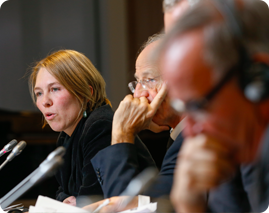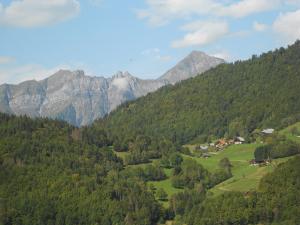[EXP] Macroregional Alpine strategy: an example of an institutional initiative involving States, Regions and organisations (CIPRA International)
Rural topic(s): Civic dialogue, Civic engagement, local governance and dialogue
Type: Innovative experience
Date of writing: February 16, 2015
Author(s) of this page: Pierre-Yves Guiheneuf
Organization(s): CIPRA (Commission Internationale pour la Protection des Alpes)
Summary:
CIPRA (Commission internationale pour la Protection des Alpes) is an organisation founded in 1952 which brings together around a hundred organisations, mainly in the environmental sector, in the seven countries along the arc of the Alps. It contributes towards the definition of the Alpine Macroregional Strategy (EUSALP), an initiative from the European Council to better coordinate cohesion policies.
Text:
Context
A macroregional strategy is an integrating framework approved by the European Council to better coordinate public policy and particularly to strengthen the connection between European structural funds and national and regional funding across a region. The first macroregional strategies were established following the Lisbon Treaty for the Baltic and the Danube.
Several Alpine regions were introduced to the idea of a macroregional strategy for the Alps, and joined Alpine states to submit an official request to the European Council for such a strategy to be launched. The European Council gave its approval in December 2013. Since then, the drafting process for this strategy has been underway. It will end in 2015.
Partners

CIPRA International uses its own network of 7 national CIPRAs as well as closely related organisations: networks of towns, researchers, UICN, WWF, etc.
Activities
CIPRA did not initiate the Alpin macroregional strategy. The European Council was requested to establish it by several regions (Bavaria, Southern Tyrol, etc.) along with Alpine states. France was chosen as the leader to submit the official request. The contents were prepared by a self-nominated committee combining representatives of the regions, States, the Alpine Convention and the Espace Alpin programme. After the European Council gave its approval, the Steering Committee continued its work to coordinate the process of drafting this strategy. Initially, civil society was poorly involved. Several organisations, coordinated by the CIPRA, therefore asked to be represented. Since 2014, CIPRA has not been able to join the Steering Committee, but ‘civil society’ (represented by CIPRA and other partner organisations) has a seat in each of the three working groups which were established.

The work is organised around three major areas of action:
1. strengthening competitiveness, prosperity and cohesion in the Alpine region;
2. guaranteeing accessibility and connectivity for all inhabitants;
3. making the Alpine region sustainable and attractive from an environmental perspective.
CIPRA’s activities are principally as follows:
-
on the international level, active participation in meetings of the working groups and preliminary bilateral discussions with other members of these working groups: exchange of documents and requesting opinions;
-
participation in the online consultation to refine the main areas of the strategy;
-
on several national levels, discussions with stakeholders involved in this consultation on the macroregional strategy; State, Regions, organisations …. All national CIPRAs do not participate in the same way on this subject, some are more active than others.
To develop its proposals in a collective way, CIPRA addresses this theme twice a year during meetings with national CIPRAs. It also organises two internal international seminars specifically on this subject and coordinates discussions of points of view in writing.
Results and prospects

It is difficult to anticipate the results as the process is still underway (start 2015). Provisional information is as follows:
-
the general orientation of the macroregional Alpine strategy is marked by a certain economic liberalism. Questions around sustainable development and the preservation of resources remain secondary. The specific objective of CIPRA, the Alpine Convention and other organisations is to steer proposals from the working groups in this direction, but this position remains in the minority and progress is often ‘marginal’.
-
CIPRA considers that it is listened to by members of the working groups and is even often consulted in a bilateral way. This contributes towards its legitimacy: the age of its network, its international dimension, its concrete knowledge of the ground thanks to its members, its ability to obtain documentation and prepare well for meetings.
-
CIPRA does not have the impression that there is one real method of consultation. The ways in which it participates are poorly defined, and deadlines are not well known in advance. Because the non-governmental world is often not highly reactive, it is sometimes difficult to prepare discussions in the participative way which CIPRA would like. This is the main difficulty encountered.
Comments:
In contrast to the ARC, CIPRA is an old organisation which was already operational when the opportunity to work on the Alpine macroregional strategy arose, which meant that the tight agenda was not considered to be restrictive. In contrast, the lack of transparency and method within the consultation organisation is seen as a problem.
Notes:
Entretien avec Claire Simon, CIPRA international.
Contact:
Download:
Informations:
Scale of intervention : European
Keywords: consultation process, mountain
Places: Europe
Actors: NGO, Region, elected representative
Methods: working group
